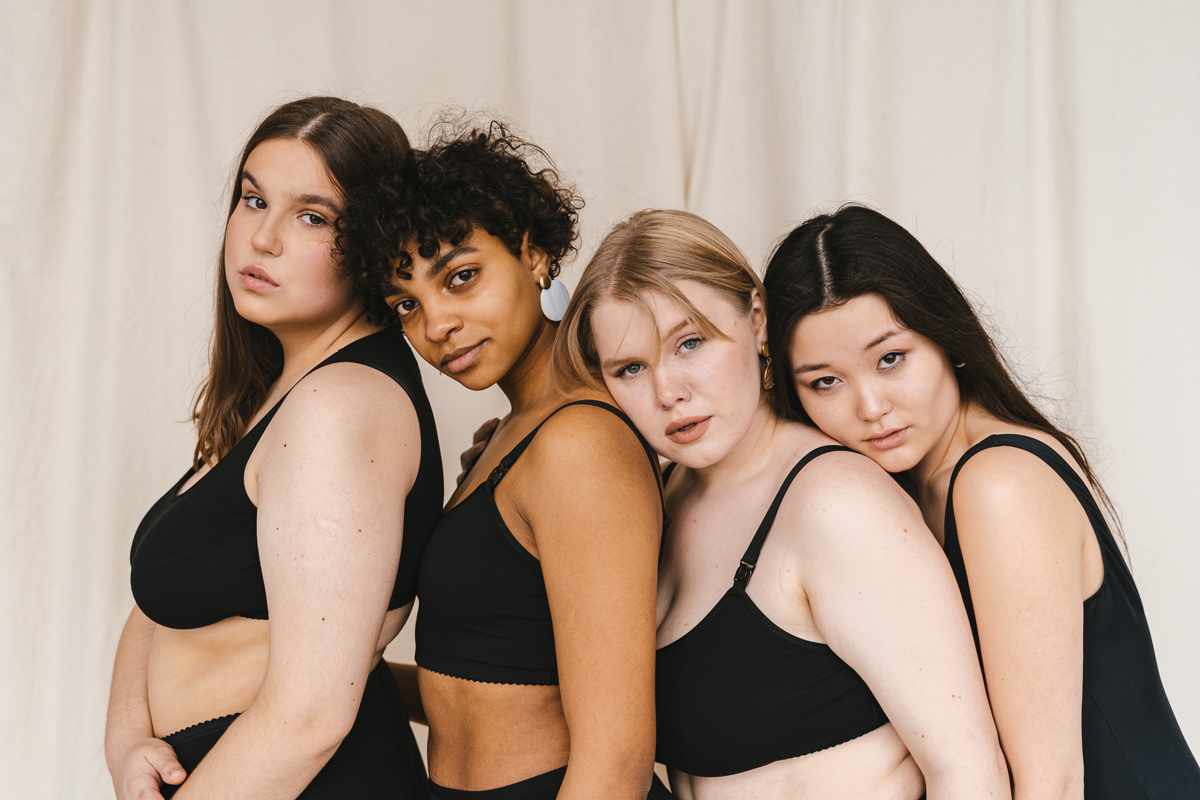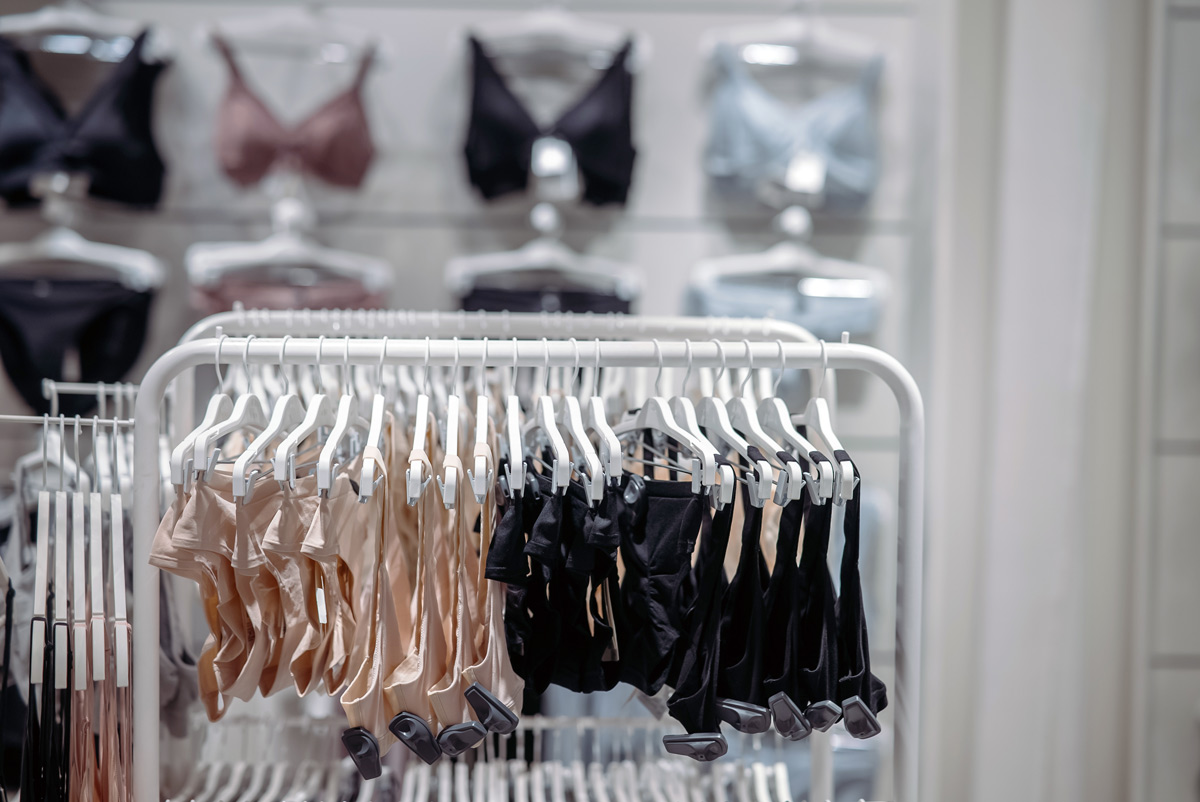Intimate apparel has experienced and continues to experience rapid change. As consumer expectations and social standards shift, so does what consumers wear under their clothing—at least which brands.
Legacy intimate apparel brands are struggling to compete, marred by growing public sentiment that they are, at best, out of touch with the everyday consumer. Emerging intimate apparel brands are capitalizing on this shift, disrupting the industry with innovative designs and product options that prioritize inclusivity and body positivity.
These relative newcomers are not just designing undergarments; they’re crafting confidence boosters. They’re not following fashion trends; they’re setting them ablaze with their creativity. They’re not just embracing sustainability; they’re building the brand on it. They’ve cracked the code—it’s not just about what you wear; it’s about how it’s made and how it makes you feel.

A Market in Transition: Trends and Drivers
The transformation is real but the segment is indeed growing. According to Market.us, the lingerie market size is projected to surpass around $72.9 billion by 2023.
A growing number of women with higher spending power and a growing awareness of fashion are expected to drive market expansion. These ladies are looking for lingerie that can be worn for a variety of activities, from nursing to athletics and brands they can feel good about wearing.
Some of the ways brands are connecting with consumers more effectively include:
Embracing Inclusivity and Body Positivity
Women of all sizes and shapes want to be able to wear every style—and are demanding inclusivity in sizing. In response to evolving consumer preferences, intimate apparel brands have begun focusing on offering diverse sizing options, while also promoting positive body image. This approach not only caters to a broader audience but improves consumer sentiment toward these brands for their commitment towards inclusivity.
Designing for the Future
The emphasis on sustainability has many brands and businesses producing eco-friendly lingerie sets by using biodegradable materials and environmentally friendly production methods.
Leveraging Technology
Brands are using technology to improve efficiency, offer more customized sizing, and improve the customer experience. From 3D scanning for accurate sizing to fabric innovations that ensure comfort without compromising aesthetic appeal, there are many new ways intimate apparel brands are connecting with consumers.
Where Do Legacy Brands Fit In?
Legacy intimate apparel brands are scrambling to regain ground lost to emerging competitors who champion body positivity, inclusivity, and customer-centric service. As the tide turns in favor of these newcomers, old dogs like Victoria’s Secret and Maidenform must learn new tricks or risk being swept away by this wave of change.

The Unraveling of Victoria’s Secret
Victoria’s Secret once dominated the intimate apparel market but has seen their popularity wane over recent years. In Q4 of 2016, Victoria’s Secret had a sold-out rate of 71%. In Q4 2020, their sold-out rate had declined to 21%. This is largely due to an inability to adapt quickly enough to shifting societal values around body positivity and inclusivity, not to mention scandals involving their former CEO.
In 2022, Victoria’s Secret launched a campaign promoting self-love featuring models of different sizes, reflecting modern society’s diverse beauty standards in an attempt to attract and retain customers desiring an authentic commitment to inclusive spaces. They also created a campaign centering on Ramadan and partnered with model and mental health advocate Bella Hadid.
But it might have been too little, too late for VS. As Victoria’s Secret failed to align with what the contemporary consumer wanted, other brands were able to swoop in and grab market share. Aerie, the intimate apparel and lifestyle brand owned by American Eagle Outfitters, challenged everything that VS and their Angels stood for by pushing marketing campaigns with taglines like #AerieReal and ‘We Are REAL’.
This pushed Victoria Secret to offer their women’s intimate apparel through Amazon. It’s now possible to order underwear, swimwear, and apparel from both Victoria’s Secret and its Pink brand on Amazon.com.
Emerging Intimate Apparel Brands
Emerging brands are disrupting the traditional landscape by being more inclusive, more authentic, and more connected to their consumers. It’s a necessary shift; a study found that 79% of Gen Zs will trust an organization more if the brand uses images that are not altered.
Emerging brands do not confine beauty to certain ideals or societal expectations; instead, they celebrate individuality and diversity. According to a 2019 Adobe study, 61% of U.S.-based consumers believe that diversity in advertising is important, and 38% are more likely to trust brands that show diversity in their ads.
Aerie
American Eagle continues to generate much of its growth from Aerie, its retail store focused on intimate apparel for girls and young women, with revenue reaching $359 million, up 12% compared to the first quarter of last year.
“Aerie was one of the first brands to celebrate real women, natural unretouched beauty, and body positivity,” explains Jennifer Foyle. The President and Executive Creative Director for AE and Aerie says the brands have been successful in redefining the standards of beauty, encouraging women to love their real selves. Aerie was a trailblazer when it comes to inclusivity in intimate apparel, with a marketing campaign that featured women in intimate apparel who had colostomy bags and in wheelchairs.
Aerie continued to lead the way with their Smoothez by Aerie, responding to market demand for intimates that go beyond the traditional bras and panties, new approaches to shapewear — with more expansive sizing and campaigns that emphasize inclusivity.

Savage X Fenty
Rihanna’s Savage X Fenty line made headlines through showcasing diversity during its fashion shows. This move resonated deeply among those who felt excluded or misrepresented within this sector, resulting in significant commercial success. The brand effectively combines celebrity appeal with inclusive messaging and has emerged as one formidable contender.
Inclusivity is at the heart of Savage X Fenty, and they have used plus-size models in multiple skin tones since the brand’s inception. Savage X Fenty’s reputation of inclusivity includes celebrating plus-size and LGBTQ+ models. When the lingerie brand launched five years ago, the line featured bras ranging in sizes from 30A to 46DDD, and underwear that ran from XS to 4X.
Founded in 2018, the brand has mainly focused on DTC sales through their e-commerce platform and has done many marketing activities like pop-up shops, all with diversity and inclusivity as a focal point.
Nuttch
The increasing focus on environmental sustainability has become a major factor in the consumer decisions of today’s younger generation, prompting many brands to offer eco-friendly alternatives.
Known for their ethical athleisure, Nuttch offers undergarments created from recycled nylon, which reduces water usage during the production process. Their sustainability promise is to put the “top priority on the environment, comfort, and beauty” and a mission “to make clothing and underwear that are fashionable, low impact, ethically made, and designed with care.”

Third Love
Heidi Zak & Ra’el Cohen founded Third Love to give consumers the ability to have beautiful bras that also fit well. They are also the largest donor of undergarments in the United States, partnering with organizations like Support the Girls, Soles4Souls, Good360, and St. Anthony’s to donate more than $50 million in products to “help women make powerful life changes.” And in 2020, they launched the TL Effect, an in-house accelerator to support, elevate, and invest in early-stage female founders of color.
A True Transformation
The lingerie market is undergoing a transformation, with current trends and consumer requirements driving its evolution. Traditional brands are being challenged by innovative newcomers who prioritize inclusivity and sustainability. These disruptors offer fresh perspectives on what intimate wear can be, pushing the boundaries of design and comfort.


